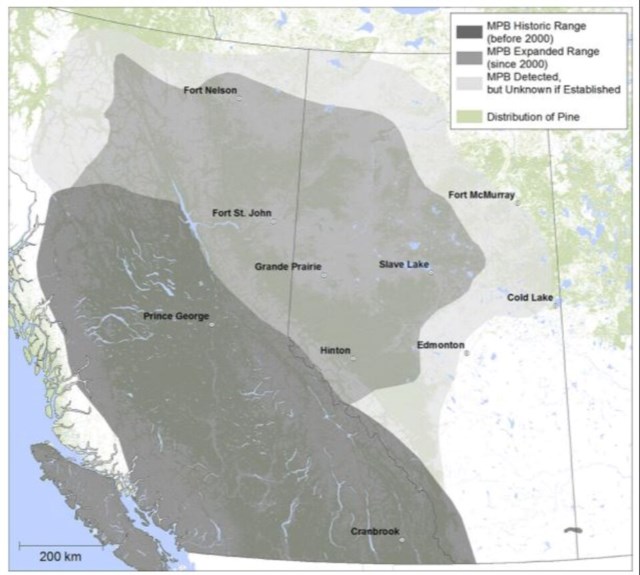Science
Replacement Soyuz launched on fight to space station – Spaceflight Now – Spaceflight Now

STORY WRITTEN FOR CBS NEWS & USED WITH PERMISSION
A Russian Soyuz crew ferry ship blasted off from Kazakhstan Thursday, kicking off an unpiloted but critical flight to the International Space Station to replace a damaged Soyuz and provide an eventual ride home for three of the lab’s crew members.
Lighting up the pre-dawn sky, the Soyuz 2.1a booster carrying the Soyuz MS-23/69S crew ship shot away from the sprawling Baikonur Cosmodrome at 7:24 p.m. EST (5:24 a.m. local time Friday), kicking off a 9-minute climb to space.
If all goes well, the Soyuz, loaded with equipment and supplies in place of a crew, will carry out an automated rendezvous with the space station, docking at the Russian Poisk module at 8:01 a.m. Saturday.
The spacecraft originally was scheduled for launch next month to ferry two cosmonauts and a NASA astronaut to the lab complex to replace another Soyuz that was expected to carry three other station fliers — Sergey Prokopyev, Dmitri Petelin and NASA astronaut Frank Rubio — back to Earth to wrap up a six-month mission.
But on December 14, their Soyuz was hit by a presumed micrometeoroid that ruptured a coolant line. Russian engineers called off the planned return to Earth after concluding the lost coolant could lead to higher-than-normal, possibly unsafe internal temperatures.
Instead, managers ordered engineers to speed up processing for the Soyuz MS-23 vehicle and, after a delay caused by additional problems with a Progress cargo ship, moved launch to Thursday.
The original MS-23 crew — Oleg Kononenko, Nikolai Chub and NASA astronaut Laral O’Hara — now plan to fly in September aboard the next Soyuz in the sequence, replacing Prokopyev, Petelin and Rubio.
Liftoff of the Soyuz MS-23 spacecraft from the Baikonur Cosmodrome, heading for the International Space Station to replace a disabled Soyuz crew ferry ship and provide a ride home for a three-man crew later this year. https://t.co/D0Ym3hg4P8 pic.twitter.com/8pjjrjqwCp
— Spaceflight Now (@SpaceflightNow) February 24, 2023
Prokopyev and company originally planned to spend six months in space as part of a normal crew rotation. But the damage to their ship and the decision to replace it means they’ll now have to stay in space for a full year.
In any case, the Soyuz MS-23 launching Thursday was critical to providing the trio with a safe ride home at the end of their extended mission as well as serving as the crew’s lifeboat in case of an emergency that might require an immediate evacuation of the space station.
Since the MS-22 vehicle was damaged in December, NASA and the Russian space agency Roscosmos have been forced to rely on a less-than optimal “plan B.”
In case of an emergency before the replacement Soyuz arrives, Rubio would squeeze into a SpaceX Crew Dragon capsule and join that ship’s four crew members for a quick descent to Earth.
Prokopyev and Petelin would attempt re-entry in the damaged Soyuz MS-22 spacecraft. With just two crew members aboard, not as much cooling would be required and Russian engineers are confident the ship could carry out a safe re-entry.
But assuming Thursday’s launch and rendezvous go well, the station will again have two healthy crew lifeboats for use as needed.
Against that backdrop, NASA and SpaceX are gearing up to launch a Crew Dragon spacecraft to the station early Monday carrying Crew-6 astronauts Stephen Bowen and Woody Hoburg, along with cosmonaut Andrey Fedyaev and Emerati astronaut Sultan Alneyadi.
Crew-6 will replace four other station crew members — Nicole Mann, Josh Cassada, Japanese astronaut Koichi Wakata and cosmonaut Anna Kikina — who plan to return to Earth around March 6 aboard their Crew-5 Dragon.
Science
Federal government announces creation of National Space Council | RCI – Radio-Canada.ca


- Home
- Politics
- Federal Politics
The Canadian Space Agency also received a proposed $8.6 million for its lunar program
Nicole Mortillaro (new window) · CBC News
Canada’s space sector received a boost from the federal government in its budget, both in terms of money and vision.
The 2024 budget (new window) included a proposal for $8.6 million in 2024-25 to the Canadian Space Agency (CSA) for the Lunar Exploration Accelerator Program (new window) (LEAP), which invests in technologies for humanity’s return to the moon and beyond.
In addition to the funding, the federal government also announced the creation of a National Space Council, which will be a new whole-of-government approach to space exploration, technology development, and research.
For Space Canada (new window), an organization comprised of roughly 80 space sector companies including some of Canada’s largest, such as Magellan Aerospace (new window), Maritime Launch (new window) and MDA Space (new window), it was a welcome announcement.
We’ve been advocating for it since the inception of our organization, and we were really very happy, and we applaud the federal government’s commitment announced in the budget,
said Brian Gallant, CEO of Space Canada.
Gallant said that investment in space is an investment in Canada.
Two-thirds of space sector jobs are STEM jobs. These are good paying solid jobs for Canadians. And on top of that, we have approximately $2.8 billion that is injected into the Canadian economy because of the space sector,
he said.
The U.S. formed its National Space Council in 1989, but it was disbanded in 1992 and reestablished in 2017.
In the 2023 budget (new window), the government announced proposed spending of $1.2 billion over 13 years, that was to begin in 2024-25, to the CSA’s contribution of a lunar utility (new window) vehicle that would assist astronauts on the moon. The as–yet–developed vehicle could help astronauts move cargo from landing sites to habitats, perform science investigations or support them during spacewalks on the surface of the moon.
It also proposed to invest $150 million over five years for the LEAP program.
MDA Space, the company behind Canadarm, was also pleased with the announcement.
Canada has an enviable global competitive advantage in space and the creation of a National Space Council is critical to Canada maintaining that leadership position,
CEO Mike Greenley said in an email to CBC News.
Space is now a rapidly growing, highly strategic and competitive domain, and there is a real and urgent need to recognize its importance to the lives of Canadians and to our economy and national security.
The next project for MDA is Canadarm3, which will be part of Lunar Gateway, a international space station that will orbit the moon. It will serve as a sort of jumping-off point for astronauts heading to the moon and eventually beyond.
The Lunar Gateway is a great opportunity for Canada and for MDA Space to not only provide the next generation of Canadarm robotics but to clearly plant our flag as a core national and industry participant in the Artemis era,
Greenley said.
Lunar Gateway is set to begin construction no earlier than 2025 (new window), according to NASA.
Science
Paleontologists unearth what may be the largest known marine reptile – Science Daily


The fossilised remains of a second gigantic jawbone measuring more than two metres long has been found on a beach in Somerset, UK.
Experts have identified the bones as belonging to the jaws of a new species of enormous ichthyosaur, a type of prehistoric marine reptile. Estimates suggest the oceanic titan would have been more than 25 metres long.
Father and daughter, Justin and Ruby Reynolds from Braunton, Devon, found the first pieces of the second jawbone to be found in May 2020, while searching for fossils on the beach at Blue Anchor, Somerset. Ruby, then aged 11, found the first chunk of giant bone before searching together for additional pieces.
Realising they had discovered something significant, they contacted leading ichthyosaur expert, Dr Dean Lomax, a palaeontologist at The University of Manchester. Dr Lomax, who is also a 1851 Research Fellow at the University of Bristol, contacted Paul de la Salle, a seasoned fossil collector who had found the first giant jawbone in May 2016 from further along the coast at Lilstock.
Dr Dean Lomax said: “I was amazed by the find. In 2018, my team (including Paul de la Salle) studied and described Paul’s giant jawbone and we had hoped that one day another would come to light. This new specimen is more complete, better preserved, and shows that we now have two of these giant bones — called a surangular — that have a unique shape and structure. I became very excited, to say the least.”
Justin and Ruby, together with Paul, Dr Lomax, and several family members, visited the site to hunt for more pieces of this rare discovery. Over time, the team found additional pieces of the same jaw which fit together perfectly, like a multimillion-year-old jigsaw.
Justin said: “When Ruby and I found the first two pieces we were very excited as we realised that this was something important and unusual. When I found the back part of the jaw, I was thrilled because that is one of the defining parts of Paul’s earlier discovery.”
The last piece of bone was recovered in October 2022.
The research team, led by Dr Lomax, revealed that the jaw bones belong to a new species of giant ichthyosaur that would have been about the size of a blue whale. Comparing the two examples of the same bone with the same unique features from the same geologic time zone supports their identifications.
The team have called the new genus and species Ichthyotitan severnensis, meaning “giant fish lizard of the Severn.”
The bones are around 202 million years old, dating to the end of the Triassic Period in a time known as the Rhaetian. During this time, the gigantic ichthyosaurs swam the seas while the dinosaurs walked on land. It was the titans’ final chapter, however — as the story told in the rocks above these fossils record a cataclysm known as the Late Triassic global mass extinction event. After this time, giant ichthyosaurs from the family known as Shastasauridae go extinct. Today, these bones represent the very last of their kind.
Ichthyotitan is not the world’s first giant ichthyosaur, but de la Salles’ and Reynolds’ discoveries are unique among those known to science. These two bones appear roughly 13 million years after their latest geologic relatives, including Shonisaurus sikanniensis from British Columbia, Canada, and Himalayasaurus tibetensis from Tibet, China.
Dr Lomax added: “I was highly impressed that Ruby and Justin correctly identified the discovery as another enormous jawbone from an ichthyosaur. They recognised that it matched the one we described in 2018. I asked them whether they would like to join my team to study and describe this fossil, including naming it. They jumped at the chance. For Ruby, especially, she is now a published scientist who not only found but also helped to name a type of gigantic prehistoric reptile. There are probably not many 15-year-olds who can say that! A Mary Anning in the making, perhaps.”
Ruby said: “It was so cool to discover part of this gigantic ichthyosaur. I am very proud to have played a part in a scientific discovery like this.”
Further examinations of the bones’ internal structures have been carried out by master’s student, Marcello Perillo, from the University of Bonn, Germany. His work confirmed the ichthyosaur origin of the bones and revealed that the animal was still growing at the time of death.
He said: “We could confirm the unique set of histological characters typical of giant ichthyosaur lower jaws: the anomalous periosteal growth of these bones hints at yet to be understood bone developmental strategies, now lost in the deep time, that likely allowed late Triassic ichthyosaurs to reach the known biological limits of vertebrates in terms of size. So much about these giants is still shrouded by mystery, but one fossil at a time we will be able to unravel their secret.”
Concluding the work, Paul de la Salle added: “To think that my discovery in 2016 would spark so much interest in these enormous creatures fills me with joy. When I found the first jawbone, I knew it was something special. To have a second that confirms our findings is incredible. I am overjoyed.”
The new research has been published today in the open access journal PLOS ONE.
Ruby, Justin and Paul’s discoveries will soon go on display at the Bristol Museum and Art Gallery.
Lomax said: “This research has been ongoing for almost eight years. It is quite remarkable to think that gigantic, blue whale-sized ichthyosaurs were swimming in the oceans around what was the UK during the Triassic Period. These jawbones provide tantalising evidence that perhaps one day a complete skull or skeleton of one of these giants might be found. You never know.”
Science
Pine beetles adapting to a changing climate, finds study – BC News – Castanet.net


Exposure to increased levels of carbon dioxide in the atmosphere accelerates the reproductive cycle of mountain pine beetles, a new study has found.
The findings, published in the journal Global Change Biology, show the beetle’s typical 40-day brooding period accelerated to 30 days when they were exposed to higher levels of carbon dioxide (CO2), the driving force behind human-caused climate change.
Rashaduz Zaman, lead author and a PhD candidate in forest biology and management at the University of Alberta, said the results show that as the climate changes, insects like the mountain pine beetle are adapting at a time trees are becoming more vulnerable to things like drought.
“The prediction is the beetle can bounce back and attack more,” Zaman said.
Since the early 1990s, the mountain pine beetle has attacked about 18 million hectares of forest, including half of the total volume of commercial lodgepole pine in British Columbia, according to Natural Resources Canada.
Warmer winters and drier summers allowed the beetle to extend well beyond its traditional range in the boreal forests of B.C. But it remained unclear how the beetle will be affected by climate change and the rising concentrations of ozone and carbon dioxide that come with it.
Beetles learned to adapt in a simulated future climate
Climate change has pushed CO2 concentrations past 421 parts per million, substantially higher than the pre-industrial level of 280 parts per million, and less than half the 1,000 parts per million that could be achieved at some point this century.
To simulate those conditions, the University of Alberta researchers introduced male and female pairs into freshly cut lodgepole pine logs, which were placed in a controlled climate chamber.
Next, they manipulated the environment by changing levels of CO2, ozone and relative humidity between 33 per cent and 66 per cent. The researchers also introduced three species of fungus that have a symbiotic relationship with the beetles. After a month or so, the logs were returned to ambient conditions to allow the beetles’ broods to emerge.


The researchers found the lower the humidity, the more the fungi grew and the more the beetles reproduced. High CO2 concentrations were also found to speed up the growth of larvae.
But when it came to ozone — another gas whose atmospheric concentration is expected to rise over the coming decades — increased concentrations were initially found to have a negative impact on mountain pine beetle reproduction and brood fitness. ?
?In the wild, a mountain pine beetle will attack a tree by making a hole in it. Once inside, it releases pheromones to attract other beetles, while releasing fungi that blocks a tree’s own toxic defences and inhibits arboreal mechanisms for transporting water and nutrients.
In the lab, the spike in ozone gas was originally found to degrade the pheromones beetles rely on for finding a mate. At first, it seemed the gas may have evened the odds and pushed back against the effects of CO2. But over the next three to four months, the following beetle generations started to adapt.
“When we tested the ozone, the first generation that came out, they were smaller and lower weight. By the third generation, they developed resistance,” said Zaman.
Expect more outbreaks
The results could have significant results for places like British Columbia, where mountain pine beetle infestations have already wiped out millions of hectares of forest in recent decades.
Zaman said climate modelling suggests more drought in B.C.’s future, something expected to weaken pine trees and make them more susceptible to infestation.
He said years of above-average wildfire may have helped halt the beetle’s advance, but over the long-term, Zaman and his colleagues forecast the mountain pine beetle will be able to adapt to a new forest regime and once again cause “significant ecological and economic consequences.”
“B.C. has been a hot spot for the pine beetle,” Zaman said. “We expect more outbreaks.”
If there’s any good news, the scientist said more studies still need to be done to confirm what they found.
-
Business24 hours ago
Firefighters battle wildfire near Edson, Alta., after natural gas line rupture – CBC.ca
-



 Tech17 hours ago
Tech17 hours agoiPhone 15 Pro Desperado Mafia model launched at over ₹6.5 lakh- All details about this luxury iPhone from Caviar – HT Tech
-



 Sports17 hours ago
Sports17 hours agoLululemon unveils Canada's official Olympic kit for the Paris games – National Post
-



 Politics23 hours ago
Politics23 hours agoTrump gave MAGA politicians permission to move left on abortion. Some are taking it. – Semafor
-



 Politics24 hours ago
Politics24 hours agoAnti-Trump Republican Larry Hogan navigates dangerous political terrain in pivotal Senate contest – Toronto Star
-



 Science20 hours ago
Science20 hours agoAstronomers discover Milky Way's heaviest known black hole – Xinhua
-
Business22 hours ago
Traders Place Bets On $250 Oil – OilPrice.com
-
News15 hours ago
Toronto airport gold heist: Police announce nine arrests – CP24











